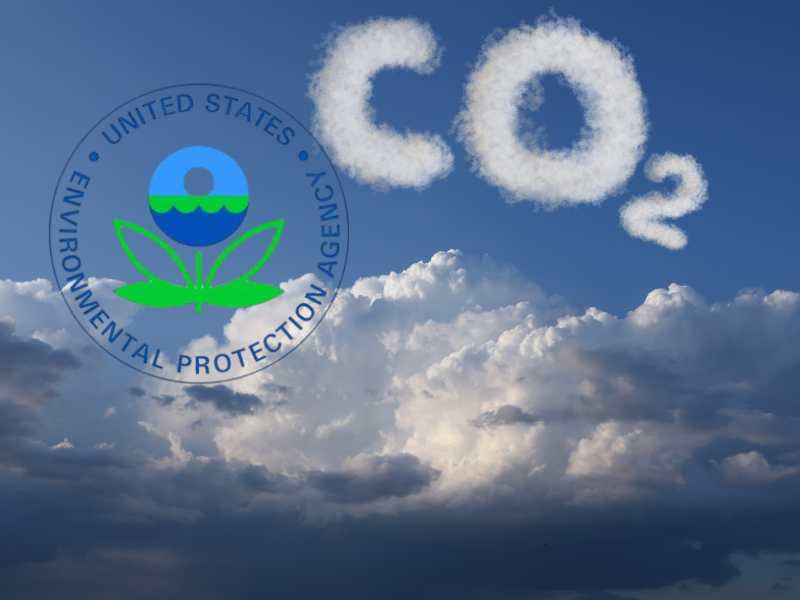Docket ID No. EPA-HQ-OAR-2025-0194
H. Sterling Burnett, Ph.D.
Director of the Arthur B. Robinson Center on Climate and Environmental Policy
The Heartland Institute
A reconsideration of the U.S. Environmental Protection Agency’s (EPA) Endangerment Finding for Greenhouse Gas Standards for Motor Vehicles (herein after referred to as the “endangerment finding) is long overdue. The endangerment finding was both unjustified as a matter of science and illegitimate as a matter of law from its inception.
Concerning the scientific basis of the endangerment finding, from the outset it was clear carbon dioxide (CO2), methane, nitrous oxide (N2O), hydrofluorocarbons (HFCs), perfluorocarbons (PFCs), and sulfur hexafluoride (SF6) did not qualify as pollutants under the Clean Air Act (CAA) as written or intended by Congress. Domestic motor vehicle greenhouse gas emissions pose no risk to people’s health or welfare at a national or regional level at any reasonably foreseeable atmospheric concentrations.
In 2009, in a hubristic leap of mission creep, the EPA administrator determined that public health and welfare were threatened by the indirect impact of greenhouse gases as a driver of climate change, such as possibly driving more extreme weather, or deaths from diseases and temperature extremes. Such indirect effects from emissions are, if anything, global in cause and not preventable by domestic action limiting emissions from U.S. motor vehicles. Yet on that tenuous basis, the EPA administrator then discovered that the agency had the “procedural discretion” to regulate such emissions. Not because the law explicitly directed or allowed the agency to do so, but because the CAA was “silent on [the] issue.”
To be clear, laws are silent on the vast majority of human actions and interactions, and this has never meant a grant to regulatory agencies to insert themselves into the myriad personal and professional decisions people make with mandates directing specific types of decisions. Where the law is silent, people are free to act and interact, unless and until the legislature, acting within its constitutional bounds, decides to legislate, resulting in regulations that limit such decisions. Congress alone, not the executive nor the Supreme Court, is specifically delegated the power to make laws.
Scientifically, there is little or no doubt that climate change is occurring, as it always has. A static “climate” globally or regionally has never existed in history. There is also little doubt that humans are contributing to the present change, although to what degree and in what ways, at global and regional levels are very much still open to debate.
It is also clear from the scientific record so far that the present change has proven beneficial to human health and welfare, rather than harmful. Higher CO2 concentrations have boosted plant productivity, resulting in a dramatic greening of the Earth, including improving crop yields and production, resulting in reduced starvation and malnutrition globally. The recent modest warming has resulted in a dramatic decline in temperature related deaths. Multiple large-scale peer reviewed studies show that cold temperatures and associated weather kill far more people than hot temperatures. As the Earth has slightly warmed, deaths from non-optimum temperatures have fallen significantly.
By contrast, the much ballyhooed and feared predicted catastrophic harms from climate change have yet to materialize. As detailed in the peer reviewed literature and data presented in the Climate at a Glance series of articles, almost no type of extreme weather event has become more frequent, severe, longer lasting, or deadly during the present period of climate change.
Neither hurricanes or cyclones, droughts, heatwaves, floods, tornadoes, nor instances of extreme cold, have become more frequent or severe during the present period of or in response to climate change. In fact, some types of extreme weather events have even become less frequent or severe. In addition, deaths attributable to extreme weather have declined dramatically – especially as technologies powered by or consisting in part of hydrocarbons have been more widely adopted and incorporated into peoples’ everyday lives. These points are not debatable; they are fact grounded in real-world data.
Even the U.N. Intergovernmental Panel on Climate Change reports in Chapter 12 of its most recent Physical Science Assessment Report, that for most categories of extreme weather it has neither detected any dangerous change nor can it attributed dangerous changes with high levels of confidence to human activities.
Since there is no readily identifiable harm, there is no scientifically justifiable basis for the endangerment finding.
DOE Secretary Chris Wright recently said:
Climate change is real, and it deserves attention. But it is not the greatest threat facing humanity. That distinction belongs to global energy poverty. As someone who values data, I know that improving the human condition depends on expanding access to reliable, affordable energy. Climate change is a challenge—not a catastrophe. But misguided policies based on fear rather than facts could truly endanger human well-being.
The endangerment finding and the various regulations that agencies have developed in response to it are what threaten human health and well-being, not greenhouse gas emissions.
As the EPA now admits, Section 202 of the CAA authorizes the agency to regulate emissions of chemicals from motor vehicles that directly compromise human health in one way or another, but the greenhouse gas emissions do not do so at any reasonably expected atmospheric concentration. Any indirect harm to human health or welfare due to impact on climate is extremely speculative, largely based on flawed computer model projections and can’t be found in the data. They are a small part of U.S. emissions, and even a smaller, virtually unmeasurable source percentage of global concentrations overall. In short, it is impossible to reasonably tie U.S. vehicle emissions of greenhouse gases to direct human health or welfare impacts. It is also factually impossible to show such emissions correlate to dangerous changes in the climate, much less any causal connection to such changes – because no such changes are evident.
When, contrary to the federal government’s position in Massachusetts v. EPA, the U.S. Supreme Court opened the door for the regulation of greenhouse gases as pollutants if endangerment was found by the EPA for climate change reasons, the court’s majority was making up the law, not following it as written by Congress and understood by the writers of the law, as the latter have said in their own words. Despite Congress considering legislation directly regulating greenhouse gases, no such legislation has been adopted, and when those bills were considered, no one suggested that the EPA already has such authority under the CAA. Nor has the U.S. government signed onto any treaty that would specifically bind it to enact federal laws to limit greenhouse gas emissions from motor vehicles, power plants, or from any other sector of the economy.
The Massachusetts v. EPA ruling was nothing more nor less than a majority of the U.S. Supreme Court at the time implementing its preferred social and economic policy goals via finding new authority for the EPA to regulate non-toxic motor vehicle emissions. Under the Obama administration, the EPA’s administrator was more than happy to exercise discretion and expand the agency’s power.
Massachusetts v. EPA was the equivalent of the Supreme Court’s earlier, misguided, now rescinded, Roe v. Wade decision, in the realm of environmental policy. The court made up authority and rights to regulate found neither in the law, nor the Constitution, giving individuals and states the right to force the federal government to adopt regulations delegated explicitly to Congress in the Constitution both as the sole legislative authority and as the only branch delegated the power to regulate interstate commerce.
More recently, in West Virginia v. EPA, the Supreme Court, while not directly overturning Massachusetts v. EPA, which was not in contention in the case, did reexamine the scope of the EPA’s authority with regards to “major questions.” In West Virginia v. EPA, the court held with regards to greenhouse gas emissions regulations for power plants that EPA had “exceeded its statutory authority when it interpreted the Clean Air Act to require . . . permitting for stationary sources based on their greenhouse gas emissions” and “may not treat greenhouse gases as a pollutant.” The Court reasoned the EPA’s claim of such authority was “unreasonable because it would bring about an enormous and transformative expansion in EPA’s regulatory authority without clear congressional authorization . . . [and as such] a measure of skepticism [is required when] an agency claims to discover in a long-extant statute an unheralded power to regulate ‘a significant portion of the American economy.’”
What is true of power plant greenhouse gas emissions is equally or even more true of such emissions from motor vehicles. If anything is a “major question,” the ability to regulate human emissions of CO2, one of the most ubiquitous naturally occurring chemical compounds on Earth, a compound actually vital to life on Earth, is a major question. With West Virginia v. EPA in hand, and President Donald Trump’s executive order directing agencies to repeal regulations that violate recent Supreme Court decisions, the EPA is not simply justified in rescinding the endangerment finding, it is legally required to do so.
From its inception in 2009, the U.S. EPA’s endangerment finding was unjustified scientifically and legally dubious.




